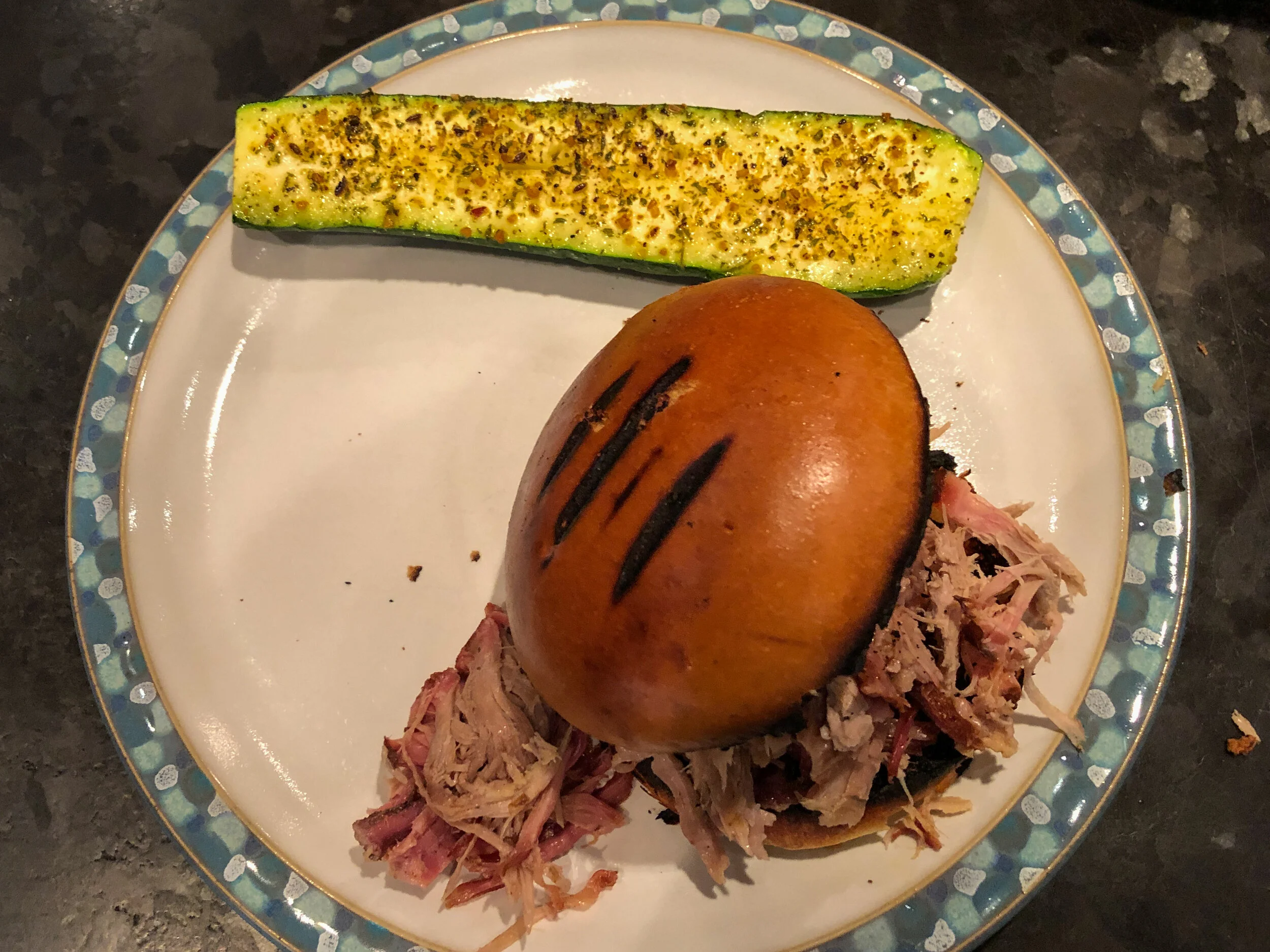Pulled Pork
The Covid pandemic when it first started left me with little “real” work to do with the closing down of several of our clinics. I thought like many I could use some of my new found spare time learning more about cooking and trying out new techniques. One of my projects was to explore the world of BBQ and smoking about which I new very little. In May, I visited our local BBQ store and purchased a Kamado Joe Classic III. It seems everyone else had the same idea, so it wasn’t until September my grill actually arrived!
You may be aware how difficult it has been to buy a bike these last months, but that pales in comparison to trying to buy charcoal which sells out the moment new shipments arrive at stores. I considered my self very lucky then, that on the day I picked up my long awaited grill, there were 2 bags left from a pallet that arrived earlier in the morning. Unfortunately, I was to discover on returning home to unpack my car, that the bottom of the grill had cracked during manufacturing!!
If you look carefully, you can see the crack on bottom!
To the stores credit, they swapped out the ceramic bottom the next day for one they had just set up as a store display.
With my grill set up and charcoal in hand, I proceeded to work my way through the instruction manual first attempting a reverse sear steak, salmon seared on soapstone, and then grilled quail.
Grilled, semi boneless quail stuffed with lemon.
All were if I say so excellent. Fortuitously at the same time as I started playing with the grill, a new season of Chef’s Table devoted to BBQ started on Netflix. After watching this, I was inspired to try my hand at smoking and BBQ, and what better way to start than with Pulled Smoked Pork Butt.
I have always been confused by the term “BBQ” / Barbecue. Wikipedia provided some insight describing it as :
“A barbecue can refer to the cooking method itself, the meat cooked this way, or to a type of social event featuring this type of cooking. Barbecuing is usually done outdoors by smoking meat over wood or charcoal. Restaurant barbecue may be cooked in large, specially-designed brick or metal ovens. Barbecue is practiced in many countries and there are numerous regional variations.
Barbecuing techniques include smoking, roasting, and grilling. The technique for which it is named involves cooking using smoke at low temperatures and long cooking times (hours). Grilling is done over direct, dry heat, usually over a hot fire for a few minutes.”
Pulled pork has special memories for me as this was a favourite of my mother who was born in North Carolina. I got to experience this first hand when I briefly moved to the state from Canada to train and work. Friday night take out was often BBQ, coleslaw, hushpuppies, and collard greens with vinegar and hot sauce. I have never found the equivalent in Canada, so I was determined to try and reproduce it on my own now that I had my own “smoker”.
There seems to be nothing you cant learn how to do on YouTube, and sure enough, there are many tutorials on how to slow cook pork butt. I followed John Setzler’s technique who has a number of recipes and instructional videos for the Kamado Joe grill.
2.5kg of pork butt rubbed generously with sugar, salt, paprika, onion powder, and garlic powder.
Cooked at 145°C until internal temperature of 74°C. You can see a nice “bark” has formed.
After the first cook, as per instructions, I wrapped the pork shoulder in foil and continued cooking until it reached “probe tenderness”, i.e. inserting a temperature probe into the meat feels as if one were inserting it into peanut butter. I started checking for this at about 94°C. The meat was still a bit firm so I cooked and additional 30 minutes longer at which time the internal temperature was 98°C.
Meat after cooking in foil.
After cooking, the meat was re wrapped in foil and allowed to rest in a cooler chest for 5 hours until serving time. The meat pulled apart easily and had a nice smoke ring, which is the pink layer directly below the surface bark. The smoke ring has been considered an emblem of great barbecue. However, its presence or absence has no bearing on flavour. The smoke ring is simply an interaction between myoglobin, a pink protein in meat, and the gases nitric oxide and carbon monoxide both of which are formed from the combination of carbon and nitrogen with oxygen during the combustion of wood or charcoal. One can read more on the science of this at Dr. Blonder’s site where he has done some very interesting research on a number of topics.
Note the pink smoke ring below the bark.
The total cook time was 5.5 hours followed by 5 hours rest. The meat was surprisingly hot coming out of the cooler chest even after 5 hours of resting. Two sandwiches used very little of the pork, so after cooling the rest was divided into freezer bags and frozen for another movie night!
Two kilos of shredded pork!
The finished produce: Pork sandwich with grilled zucchini.
Given my success with pulled pork, I very much look forward to smoking ribs next. Who knows, maybe even a turkey!







